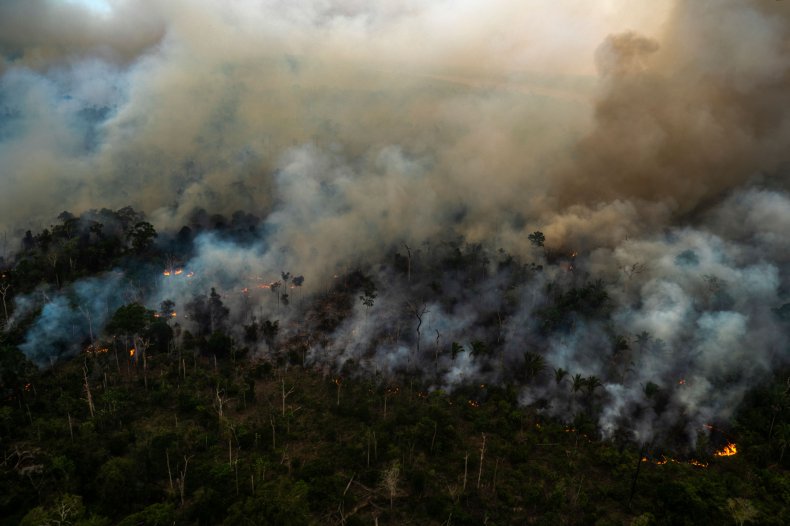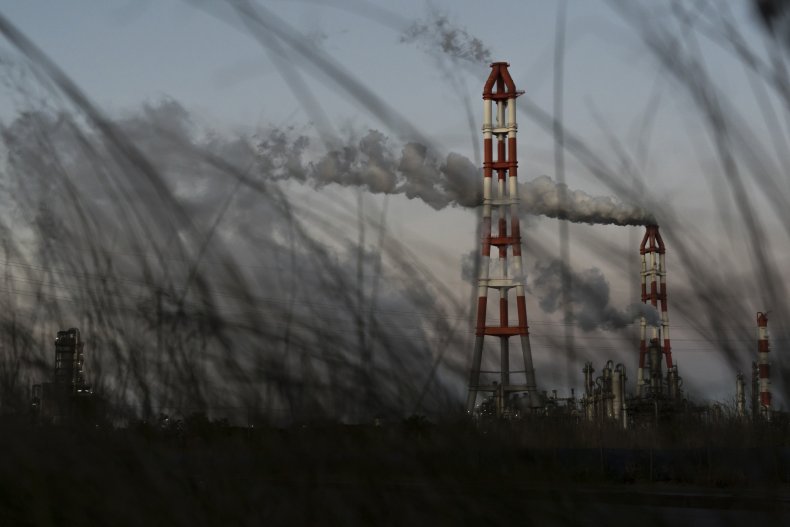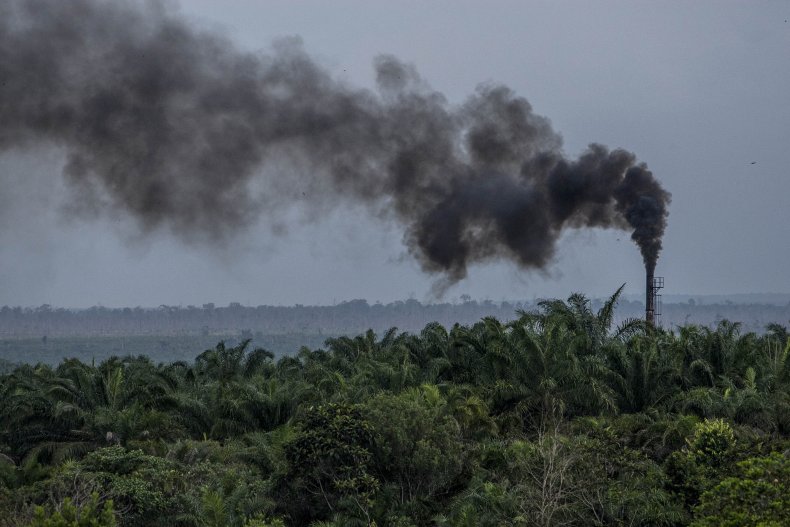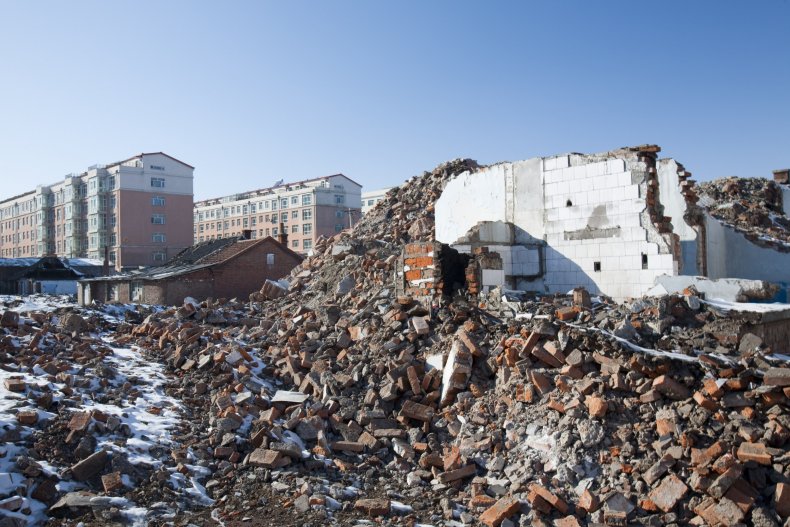What Countrys Are The Worst For Climate Change
Globe leaders (with the notable exception of primal players Xi Jinping of Mainland china and Vladimir Putin of Russia) are currently attending the COP26 climate summit in Scotland.
Burning oil, gas and coal releases greenhouse gases, such equally carbon dioxide, which warm Earth. In 2015's Paris Agreement, leaders committed to go on global warming "well below" 2C—aiming for 1.5C—to avert climate disaster. Just the world is not on rails.
According to the Baronial 9 IPCC report which represents the global scientific consensus on global warming, "stabilising the climate will require strong, rapid, and sustained reductions in greenhouse gas emissions, and reaching net zero CO2 emissions."
Net zero ways not adding to the amount of greenhouse gases in the atmosphere.
A key aim of the COP26 briefing is to "secure global net zero by mid-century [2050] and proceed 1.5 degrees within reach."
Policy forum Organization for Economic Co-performance and Development (OECD) tracks each country on eight greenhouse gases, including carbon dioxide, methane and nitrous oxide.
Not all countries provide data each yr. The list below has been compiled by taking the an boilerplate of the amount of greenhouse gas each land has pumped into the atmosphere every twelvemonth since 1990.
10. United Kingdom
655,430,000 (tons of CO2 equivalent) a year

The U.K. set aggressive 2030 and 2035 targets that, if accomplished, would put it on rails to achieve its 2050 net zero target.
However, scientific analysers at Climate Activeness Tracker, an organization that monitors climate policy, has warned there is "a large gap between the U.K's ambitions and its present level of action."
Its U.Thousand. policy contour notes: "Nether current policies, the United kingdom is expected to accomplish only 54-56% below 1990 levels (excl. LULUCF), far from on rails to achieve its recently updated NDC and underscoring the scale of new policies needed."
ix. Canada
700,292,000 (tons of CO2 equivalent)

Canada's climate target, policies and finance has been categorized as "highly bereft" by Climate Activeness Tracker.
It reports that Canada is not meeting its "fair-share contributions to climatic change" and should strengthen targets and policies, as well as provide more support to other nations.
International Energy Agency, a respected climate watchdog, reports that Canada emitted 5711 mega tons of COtwo alone in 2019—a 39 pct increase on 1990 levels.
8. Brazil
790,334,000 (tons of CO2 equivalent)

Brazil'due south climate targets and policies take also been dubbed "highly bereft" by Climate Action Tracker.
According to IEA metric calculations, Brazil emitted 410.99 Mt of CO2 in 2019—up 122 percent from 1990 emission levels.
Most of Brazil's emissions come up from land use changes and deforestation.
7. Germany
1,013,030,000 (tons of CO2 equivalent)
Xi years ago, Germany initiated the Energiewende, a plan to make its energy organisation more efficient and supplied mainly by renewable free energy sources. Under the plan, half of all electricity supply will come from renewable energy sources and coal utilize will be phased out by 2038.
In September 2021, even so, Russian energy company Gazprom completed a v twelvemonth projection to construct a natural gas pipeline, called Nord Stream 2, from Russia to Deutschland, doubling Moscow'south gas exports to Germany.a
According to IEA, Federal republic of germany too plans to phase-out nuclear power by 2022. IEA data shows Germany emitted 644.eleven Mt of CO2 in 2019—a 31 percent subtract from 1990.
six. Japan
1,334,071,000 (tons of CO2 equivalent)

Climate Activeness Tracker rates Nippon's climate targets, policies and finance as "insufficient," and suggests that the country needs substantial improvements to exist consequent with the Paris Agreement's 1.5°C temperature limit.
According to IEA, Japan emitted 1056.xix Mt of CO2 in 2019—an increase of 0.41 percent from 1990 levels.
5. Indonesia
1,623,505,000 (tons of CO2 equivalent)

Indonesia is the globe's fourth-largest producer of coal and Southeast Asia'due south biggest gas supplier. It is also the largest producer of biofuels worldwide.
Carbon Cursory, a British website focused on climate policy, reported that 'deforestation and "peatland megafires" play a meaning part in Indonesia's emissions.
IEA data shows that Republic of indonesia emitted 583.41 Mt of CO2 in 2019—a more than than three-fold ascent on 1990 levels.
Republic of indonesia has signed a COP26 agreement to cease and reverse its deforestation past 2030.
four. Republic of india
one,919,572,000 (tons of CO2 equivalent)

India is responsible for 6.84 percent of global greenhouse gas emissions, according to recent Financial Times analysis, with lxxx pct of its electricity generated by fossil fuels.
Information from IEA, shows that India emitted 2310 Mt of CO2 in 2019—a 335 pct rising on 1990 levels.
Climate Action Tracker rates India's climate targets and policies as "highly bereft" insisting the country needs to "curb its expected growth in emissions from its dependency on fossil fuels."
three. Russia
2,106,040,000 (tons of CO2 equivalent)
Russia's total greenhouse gas emissions accept dropped since 1990, merely are estimated to correspond 4.07 per centum of the global full.
Climate Activeness Tracker rates Russia's climate targets, policies and finance as "critically insufficient". Its analysts warn: "Under current policies, Russia's economic system-wide emissions are expected to either flatline or go on rising to 2030, when they should exist apace declining, particularly for such a large emitter."
ii. United States
half dozen,906,367,000 (tons of CO2 equivalent)

The U.S. is thought to contribute more than than 10 percent of global carbon emissions. On boilerplate, each American is responsible for 15 tonnes a year, more than than double the footprint of the average Chinese denizen.
President Joe Biden has pledged to reduce cyberspace greenhouse gas emissions past at least half rom 2005 levels by 2030. He is also cracking down on methane pollution which, according to the FT, accounts for well-nigh x pct of man-fabricated greenhouse gas emissions in the U.Due south. "but has more than than 80 times the warming potential of carbon dioxide over a twenty-year period."
IEA data shows u.s., emitted four,744 Mt of CO2 in 2019—down one percent on 1990.
1. China
nine,362,382,000 (tons of CO2 equivalent)

China's COtwo emissions have increased dramatically since the 1990s.
International Energy Agency (IEA) reports that China emitted 9,876 Mt of COii in 2019—a 372 percent increase on 1990 emission levels.
About 70 pct of China'due south electricity was produced from non-renewable or nuclear fuels, with renewables producing 26 pct, and nuclear 4 per centum.
Source: https://www.newsweek.com/worst-countries-2021-greenhouse-gas-emissions-climate-cop26-china-united-states-1645399
Posted by: pattersonackwoure.blogspot.com

0 Response to "What Countrys Are The Worst For Climate Change"
Post a Comment